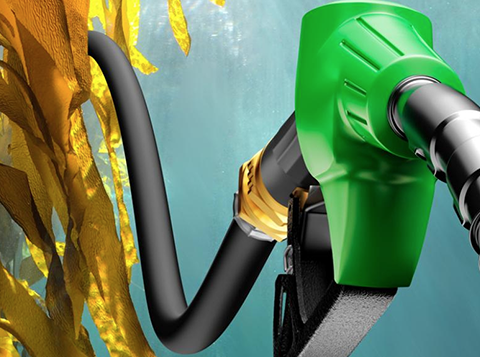
The visionary leaders in the field of regenerative ocean farming endeavor to take humanity way beyond reduce, reuse, recycle.
It is both an emergent global industry and a key solution to climate change that sequesters carbon, revitalizes marine ecosystems, supplies goods—including food, fertilizer, feed, bioplastics, biofuels—and possibly most important, jobs.

CLIMATE CROP
Kelp grows 1-2 feet a day, absorbing up to twenty times more carbon than land-based plants as it grows, requiring no fresh water, fertilizer, or other inputs.
OCEAN’S SUPERFOOD
Kelp is low in calories and rich in essential vitamins and minerals, including Vitamin A and K, iron, folate, calcium, magnesium, zinc, and iodine, which plays an important role in thyroid regulation and can help boost the body’s metabolism. It’s high in antioxidants, which can help combat disease-causing free radicals and reduce oxidative stress.

“Seaweed is poised to become one of the key strategic resources of the future…”
— Albert II, Prince of Monaco
Seaweed Around the Clock Keynote, June 2022

BIOFUEL
Seaweed, or macroalgae, is one of the highest potential third-generation biofuel sources. With 2016 global production valued at USD $11.6 billion, the market is expanding in capitalization on an annualized basis. Benefits include:
▶ Macroalgae can grow exponentially in saline and salty water and adverse conditions.
▶ It’s safe, sulfur free, and extremely compostable.
— Bioengineered Scientific Journal, UNFAO
LIVESTOCK
Cattle release methane when they burp, making them the top agricultural source of greenhouse gasses. Methane has 84x the warming potential of CO2 (over a 20-year period). Added to cattle feed, Asparagopsis taxiformis, a red seaweed, reduces methane emissions as much as 82%.
— UN Economic Commission for Europe, UC Davis
BIOMEDICAL
Biomedical and biological applications of seaweed-derived polysaccharides include:
▶ Tissue engineering
▶ Drug delivery
▶ Oncology
▶ Wound care
— Starch Scientific Journal
BIOPLASTICS
Seaweed-based polymers can replace petroleum-based plastics. They are:
▶ High quality, renewable
▶ Inexpensive
▶ Biodegradable and home compostable
▶ Edible as waste
— International Research Journal of Modernization in Engineering
COSMETICS
Seaweed can be used to extract a wide range of biologically active compounds to create both traditional and new cosmeceutical products, including:
▶ Vitamins and minerals
▶ Amino acids, carbohydrates, and lipids
— Cosmetics Scientific Journal, Personal Care Insights

“While all of these big-budget silver bullet attempts at stopping climate change are floundering, Maine lobstermen are putting their heads down, getting to work, and leading the charge in the U.S. in growing the most climate-friendly food on the planet.”
— Briana Warner, President/CEO, Atlantic Sea Farms
World Economic Forum, May 2022








